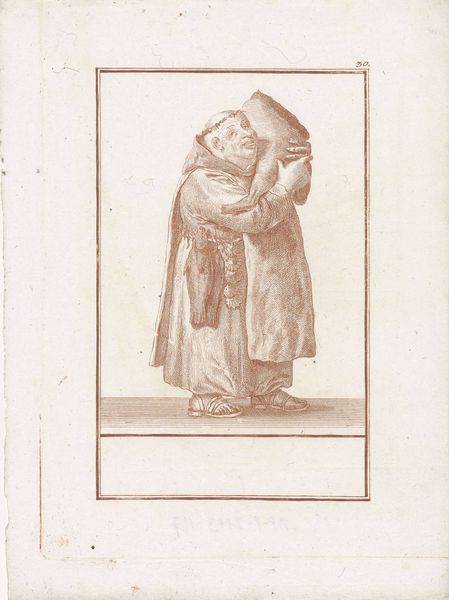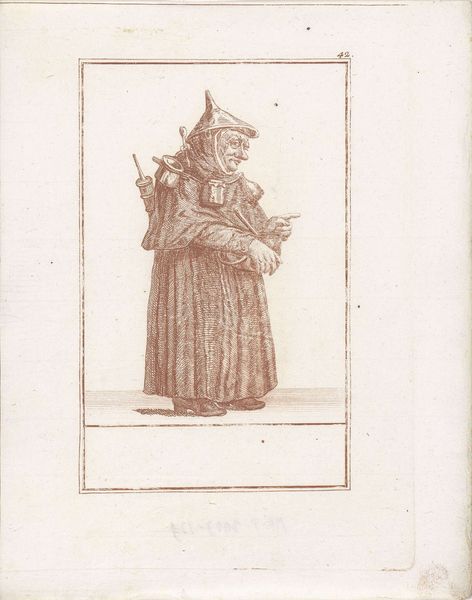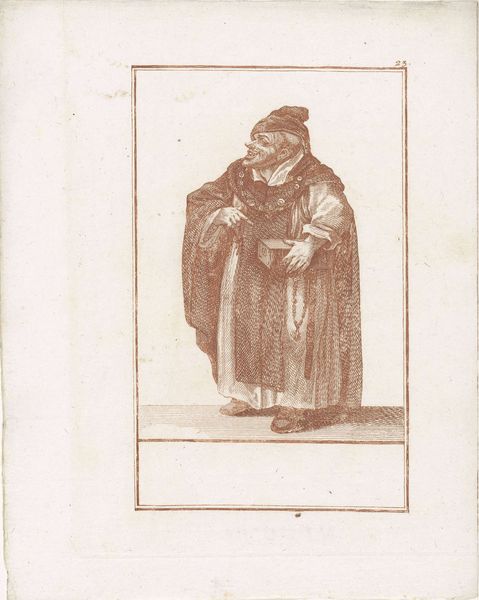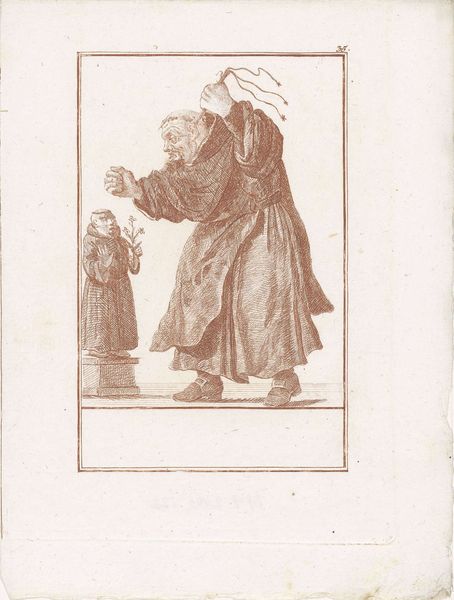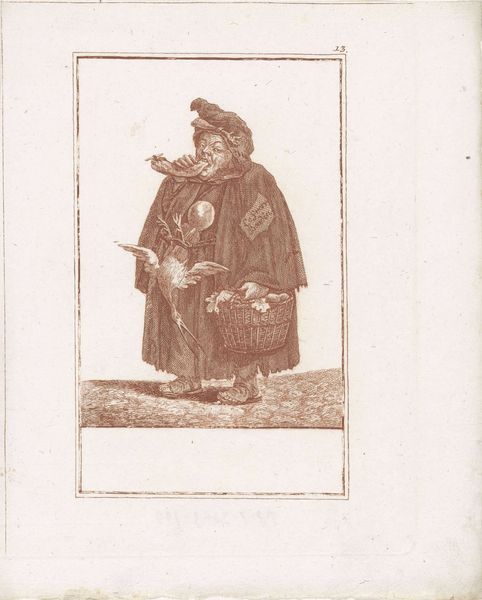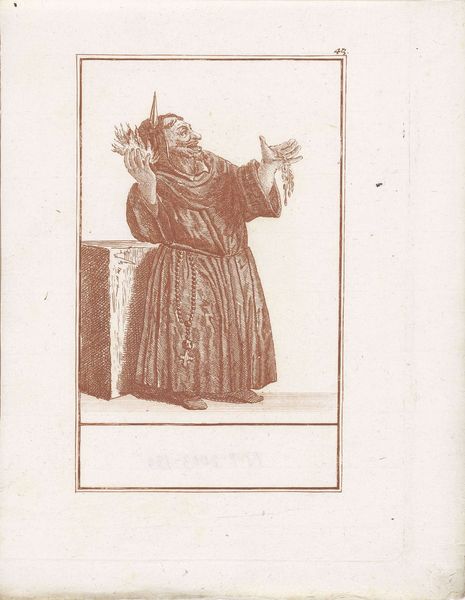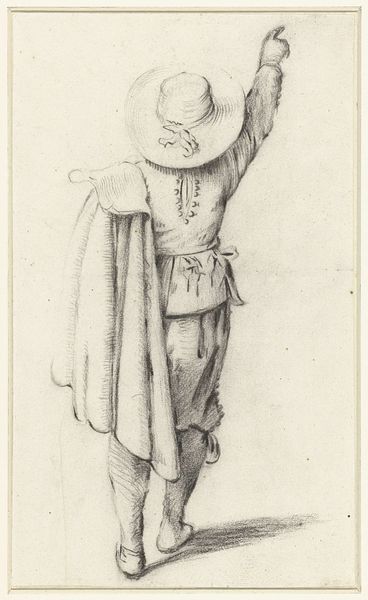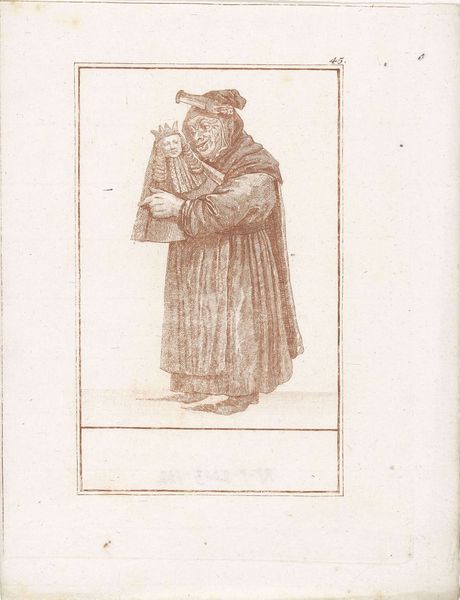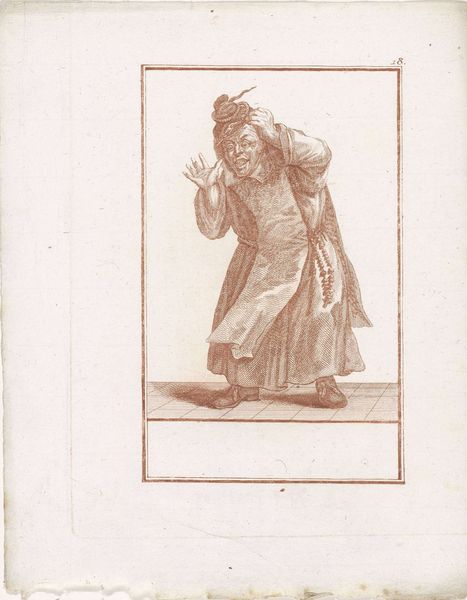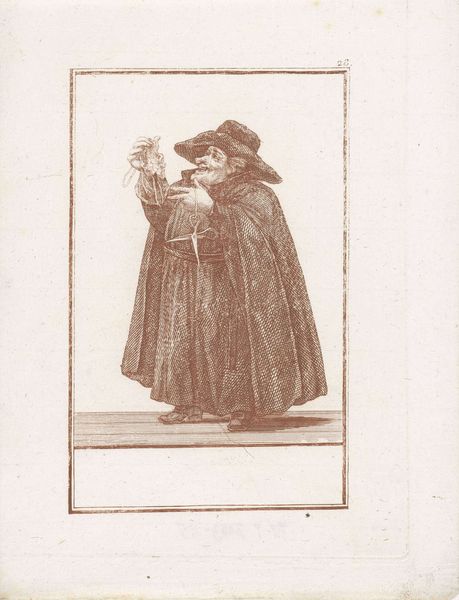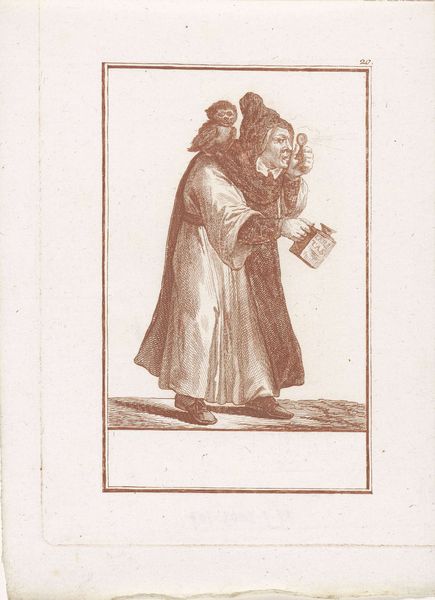
engraving
#
portrait
#
baroque
#
figuration
#
genre-painting
#
engraving
Dimensions: height 234 mm, width 184 mm
Copyright: Rijks Museum: Open Domain
Curator: Welcome! We're standing before Jacob Gole’s "Monnik met blokfluit" – "Monk with Recorder" – an engraving dating back to 1724. Editor: It’s a striking image, isn't it? The figure almost leaps off the page with that playful smirk. There's a levity that really undermines the seriousness one might associate with monastic life. Curator: Precisely! Gole created this genre scene during the Baroque era, known for its dramatic and often theatrical flair. We see it in the monk’s almost exaggerated gestures, but what resonates most for me is the critique it subtly offers on religious life in the 18th century. Editor: Absolutely. The recorder itself becomes symbolic. Is it merely an instrument of amusement, or does it suggest a deeper connection to communal traditions, folklore, or perhaps even hidden rebellions against the strictures of the Church? Flutes have so many folk connotations... Curator: That's astute. Instruments, across time and cultures, act as powerful carriers of social meaning. Considering the era, one can wonder what kind of liberties the monks could allow themselves to distract from piety and austere existence... It's a visual paradox, isn't it? The solemn robes against the joyful music maker. Editor: Indeed. I am wondering if his rather exaggerated smile might speak about how individuals seek ways of maintaining an inner harmony amid a life of external obedience. Is there some psychological tension expressed between joy and religious obedience? The ambiguity of that grin says everything. Curator: Such ambivalence resonates even now. The image’s power lies, perhaps, in its openness to interpretation, provoking dialogue across centuries about individual freedom versus social conformity. Editor: Ultimately, Gole’s monk invites us to contemplate not only a particular moment in history but timeless questions of purpose, belonging, and self-expression through our own iconography and traditions. Curator: It leaves us considering how we frame those concepts today through art, and where identity sits inside collective thought. Thank you for being with us.
Comments
No comments
Be the first to comment and join the conversation on the ultimate creative platform.
